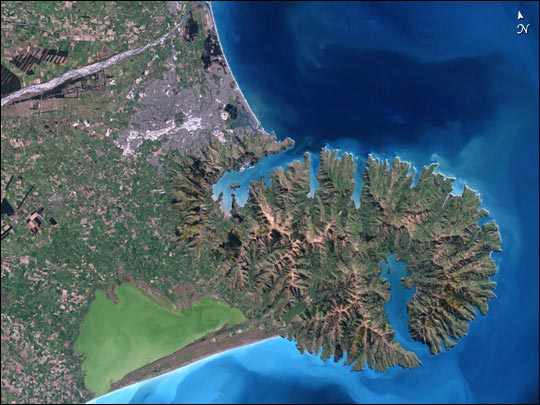
The Science Behind the New Zealand Quake

An earthquake rocked New Zealand's second-largest city this afternoon (Feb. 22), killing at least 65 people in what is now the second-deadliest earthquake in the country's history.
The magnitude 6.3 earthquake hit Christchurch, home to nearly 400,000 people on New Zealand's southeast coast. The U.S. Geological Survey considered the earthquake an aftershock of the magnitude 7.0 quake that struck outside the city last Sept. 3. Though smaller in magnitude, this temblor proved much deadlier than the original earthquake.
"The reason is that its location is essentially under Christchurch," Don Blakeman, a geophysicist with the USGS in Golden, Colo., told OurAmazingPlanet.
The quake struck in the worst possible place and time, near the middle of the city during business hours — 12:51 p.m. local time (6:51 p.m. EST Feb. 21). The previous quake struck in the wee hours of the morning, when most people were still asleep, and the epicenter was about 25 miles (40 kilometers) west of the city, which is second to Auckland in population.
Today's quakebadly damaged Christchurch's historic cathedral and was strong enough to break about 30 million tons of ice off the nearby Tasman Glacier, the New Zealand Herald reported. The calving created waves higher than 11 feet (3.5 meters) in the lake under the glacier.
Ring of Fire's edge
New Zealand is a nation of islands along the volatile Pacific Ring of Fire — a narrow zone around the Pacific Ocean where a large chunk of Earth's earthquakes and volcanic eruptions occur. Roughly 90 percent of all the world's earthquakes, and 80 percent of the largest ones, strike along the Ring of Fire.
Sign up for the Live Science daily newsletter now
Get the world’s most fascinating discoveries delivered straight to your inbox.
Today's aftershock struck along the boundary of the Indo-Australian and Pacific plates. These tectonic plates — huge, moving slabs of the Earth's crust — meet at the center of South Island, one of New Zealand's two main land masses. The aftershock, just like the September quake, was an oblique thrust fault, a break in the Earth's crust where a lower section is pushed over a higher one.
Every year New Zealand has about 100 to 150 quakes large enough to be felt, according to GNS Science, a New Zealand earth science research firm. Since records began being kept in the 1840s, New Zealand has averaged several magnitude 6 earthquakes every year, one magnitude 7 every 10 years, and a magnitude 8 every century, GNS said.
New Zealand's largest known earthquake was a magnitude 8.2 that hit Wairarapa in 1855. New Zealand's deadliest quake was a magnitude 7.8 in the North Island's Hawke Bay that killed 230 in 1931.
Aftershocks continue
Big aftershocks are not unusual. Just last week, a 6.6 magnitude aftershock ruptured near Maule, Chile — almost a year after one of the largest earthquakes in recorded history, a magnitude 8.8, in the same region.
Several other aftershocks, magnitudes 4 to 5, have occurred in the Christchurch region, and there have been approximately six aftershocks greater than magnitude 5.0 there, according to the USGS. Today's aftershock was the largest to date.
An aftershock will typically occur in the same region and by the same mechanism as the original shock, Blakeman said.
Reach OurAmazingPlanet staff writer Brett Israel at bisrael@techmedianetwork.com. Follow him on Twitter @btisrael.
This story was provided by OurAmazingPlanet, a sister site to LiveScience.










